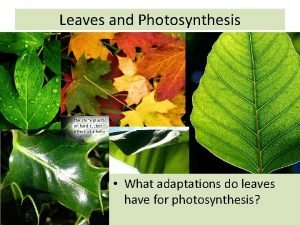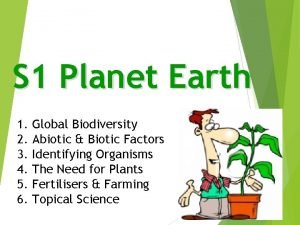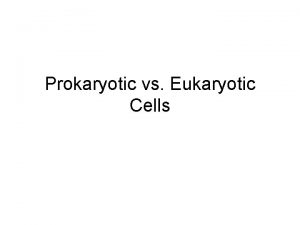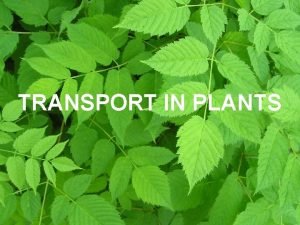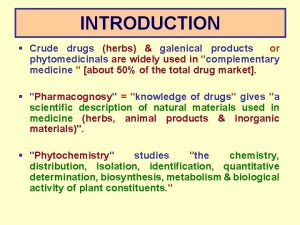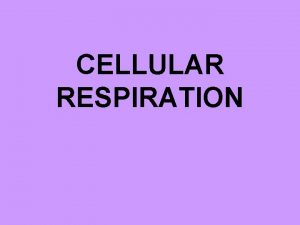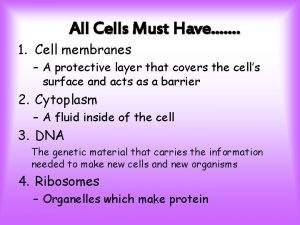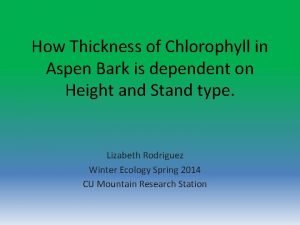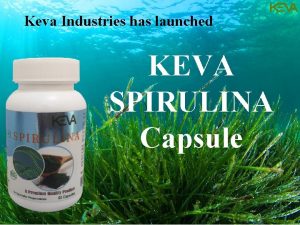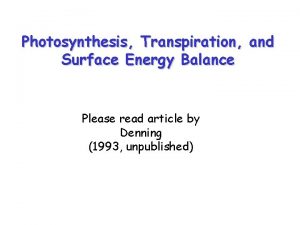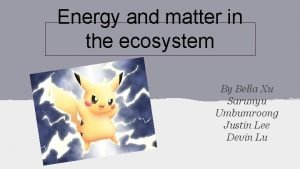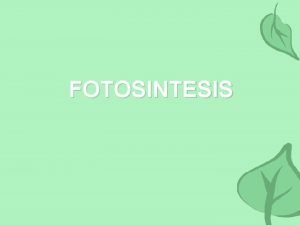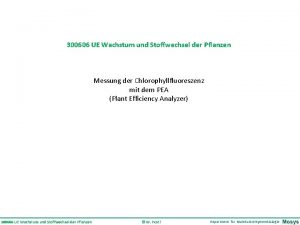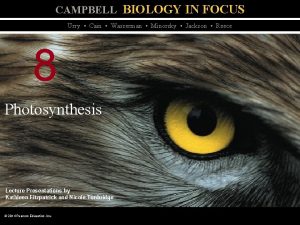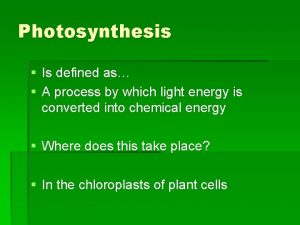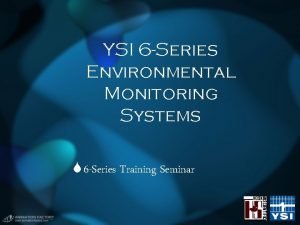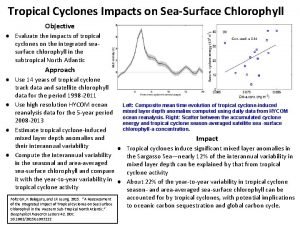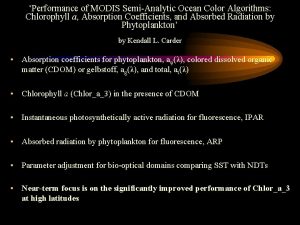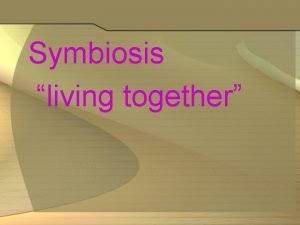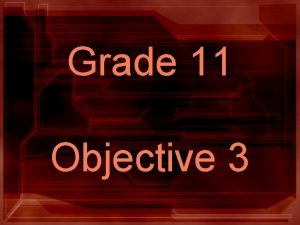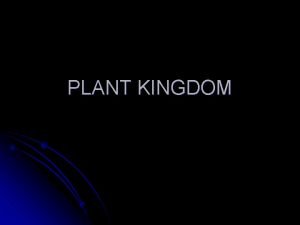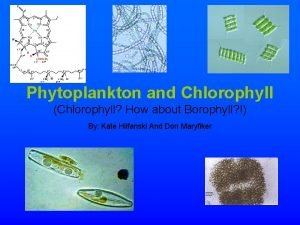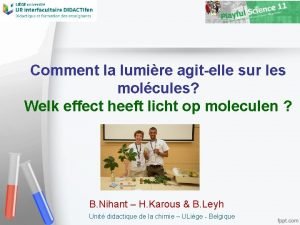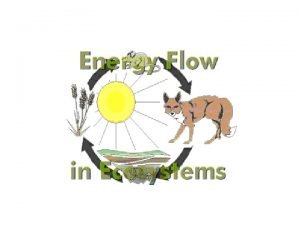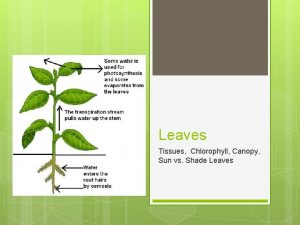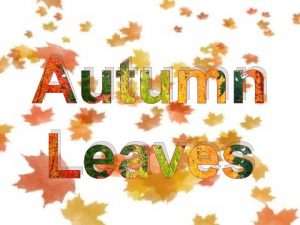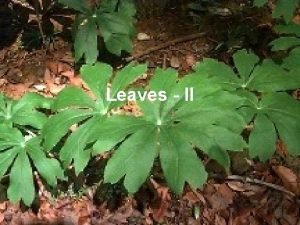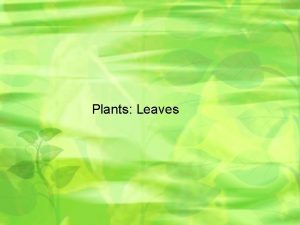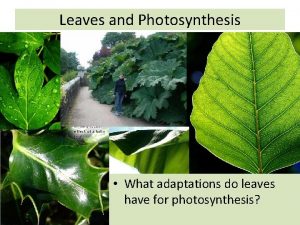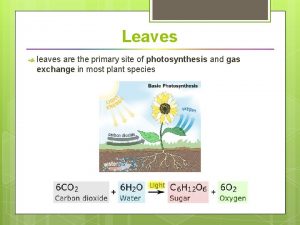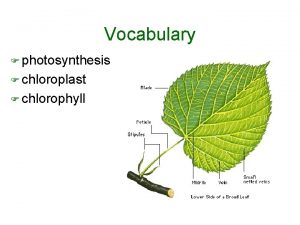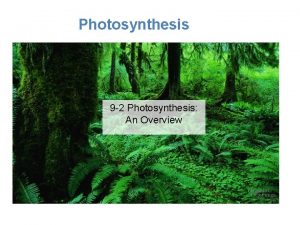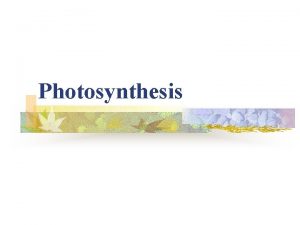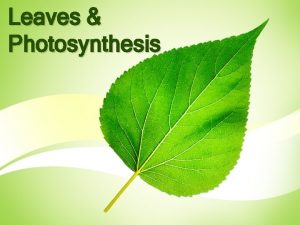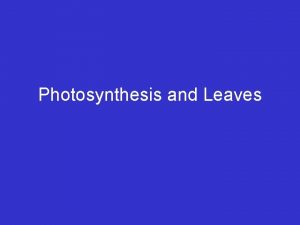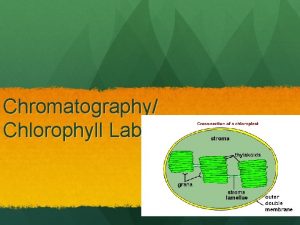Photosynthesis Chlorophyll The cells in leaves contain chlorophyll
























































- Slides: 56


Photosynthesis

Chlorophyll • The cells in leaves contain chlorophyll • Traps energy from the sun to produce energyrich sugar molecules--carbohydrates 6 CO 2 + 6 H 2 O + solar energy = C 6 H 12 O 6 + 6 O 2

Energy & Nutrient Transfer

Producer • Organism that makes its own food • Also called autorophs

Consumer • Organism that get their energy by eating other organisms. • Also called heterotrophs


Decomposers • Organisms that feeds by breaking down organic matter from dead organisms • Examples: bacteria and fungi

Exception to the Rule • Deep-Ocean Ecosystems --Tube worms depend on bacteria that live inside them to survive. The bacteria uses energy from Hydrogen Sulfide to make their own food chemosynthesis

Chemosynthesis

Life Depends on the Sun • Organisms use energy to move, grow and reproduce

Grizzly Bears Omnivore—eats both meat & plants Can eat up to 1. 5% of their body weight in one day when eating salmon and 33% of body weight when eating fruits & vegetation. • How many pounds of salmon can a 200 lb grizzly bear eat in one day? 15% of 200 = 30 lbs • How many pounds of fruits and vegetation can the same bear eat in one day? 33% of 200 = 66 lbs

Cellular Respiration Breaking down of food to yield energy using the O 2 you breath in C 6 H 12 O 6 + 6 O 2 = 6 CO 2 + 6 H 20 + energy

Excess Energy • Stored as Fat or Sugar

Energy Transfer • Food Chains, Food Webs, Trophic Levels

Food Chain • Sequence in which energy is transferred from one organism to the next as each organism eats another organism

Food Web • Feeding Relationships that are possible in an ecosystem

Who Eats Who-Energy Transfer

Food Chain – Food Web

Trophic Level • Each step in the transfer of energy through a food chain or web in an ecosystem

Trophic Levels 5 tertiary consumers secondary consumers primary consumers producers 5000 500, 000 5, 000

Food Pyramid

Energy Pyramid energy lost energy transferred

Biomass—total dry mass of organisms in an area tertiary consumers 75 g/m 2 150 g/m 2 secondary consumers primary consumers producers 675 g/m 2 2000 g/m 2

Energy Loss Affects • 1. decrease amount of energy impacts each trophic level • 2. Loss limits the number of trophic levels; rarely have 4 or 5 levels since so much energy is needed to support

Trophic Cascade • Indirect interaction between predators and the resources consumed by the predator’s prey

Biosphere

Cycling of Materials • Materials in an ecosystem are constantly reused in an endless cycle


Erosion • Water erosion by rivers and oceans dramatically changes the Earth’s surface • Wind erosion blows away top soil and erodes soft rocks, such as sandstone.

• • • Nitrogen 78% Oxygen 20% Argon 0. 9% CO 2 0. 04% Water Vapor 1%



Atmospheric Circulations Source: Wikipedia

Earth’s Energy Balance Earth’s overall average equilibrium temperature changes only slightly from year to year. A balance exists between incoming solar energy (shortwave radiation) and outgoing energy from Earth to space (longwave radiation). Source: Ahrens, C. D. , 2008: Essentials of Meteorology, An Invitation to the Atmosphere (5 th Edition)

Without greenhouse gases, the average surface temperature of the Earth would be – 18° C No greenhouse gases (only permanent gases) Source: Ahrens, C. D. , 2008: Essentials of Meteorology, An Invitation to the Atmosphere (5 th Edition) The current atmosphere (with greenhouse gases) 33° C difference

The World’s Water • 97% Salt Water • 2. 5 % Frozen Fresh Water • . 5% Usable Fresh Water

The Water Cycle

Water Cycle

Ocean circulation Source: NOAA

Source: Wikipedia

Nitrogen & Carbon Cycle

Carbon is the Building Block CO 2 in air photosynthesis Combustion Respiration respiration photosynthe sis Decomposition of organisms Fossil fuels CO 2 dissolved in water


Terrestrial Ecosystems are an… • • • Integral part of global carbon system Plants take in and store carbon dioxide from the atmosphere through photosynthesis Below ground microbes decompose organic matter and release organic carbon back into the atmosphere www. bom. gov. au/info/climate/change/galler y/9. shtml Cycle shows how nature’s sources of CO 2 are self regulating – that which is released will be used again – Anthropogenic carbon not part of natures cycle – is in excess


Nitrogen Cycle Movement of Nitrogen between atmosphere, bacteria and other organisms

nitrogen cycle mostly takes place underground Nitrogen in atmosphere plant Nitrogen fixing in roots decomposers ammonia Nitrogen fixing bacteria nitrates nitrites Nitrifying bacteria


Phosphorus Cycle Movement of phosphorus from the environment to organisms and back


Aquatic Ecosystem

How Ecosystems Change • Primary Succession occurs on a surface where no ecosystem existed before • Secondary Succession occurs where an ecosystem previously existed—pioneer species, climax community

Primary Succession

Ecological Succession

Old Field Succession
 Photosynthesis takes place in the
Photosynthesis takes place in the What are the raw materials required for photosynthesis
What are the raw materials required for photosynthesis Photosynthesis chlorophyll
Photosynthesis chlorophyll Organism cells
Organism cells Piliferous
Piliferous Enfleurage terpenes
Enfleurage terpenes What type of cell performs cellular respiration
What type of cell performs cellular respiration All cells must contain
All cells must contain Prokaryotic cells
Prokaryotic cells Younger cells cuboidal older cells flattened
Younger cells cuboidal older cells flattened Gametic cells vs somatic cells
Gametic cells vs somatic cells Cells and life lesson 1 answer key
Cells and life lesson 1 answer key Prokaryotic cells vs eukaryotic cells
Prokaryotic cells vs eukaryotic cells Onodi cells and haller cells
Onodi cells and haller cells What cell type
What cell type Somatic cells vs germ cells
Somatic cells vs germ cells Why did robert hooke name cells “cells”?
Why did robert hooke name cells “cells”? Alpha intercalated cell
Alpha intercalated cell Are red blood cells prokaryotic or eukaryotic
Are red blood cells prokaryotic or eukaryotic Chlorocruorin
Chlorocruorin Masses of cells form and steal nutrients from healthy cells
Masses of cells form and steal nutrients from healthy cells Parafollicular
Parafollicular Nondisjunction in meiosis
Nondisjunction in meiosis Venn diagram animal and plant cells
Venn diagram animal and plant cells Chlorophyll
Chlorophyll Aspen chlorophyll
Aspen chlorophyll Keva chlorophyll
Keva chlorophyll Light and dark reactions of photosynthesis
Light and dark reactions of photosynthesis Types of chlorophyll
Types of chlorophyll Chlorophyll biology definition
Chlorophyll biology definition Kautsky kurve
Kautsky kurve When a chlorophyll molecule absorbs light,
When a chlorophyll molecule absorbs light, Chlorophyll is
Chlorophyll is Ysi chlorophyll probe
Ysi chlorophyll probe Chlorophyll borophyll
Chlorophyll borophyll Chlorophyll
Chlorophyll Symbiosis video national geographic
Symbiosis video national geographic Are animal cells round or rectangular
Are animal cells round or rectangular Algae are chlorophyll bearing
Algae are chlorophyll bearing What is stomata
What is stomata Chlorophyll borophyll
Chlorophyll borophyll Chlorophyll
Chlorophyll Thiếu nhi thế giới liên hoan
Thiếu nhi thế giới liên hoan Các số nguyên tố
Các số nguyên tố Tia chieu sa te
Tia chieu sa te Các châu lục và đại dương trên thế giới
Các châu lục và đại dương trên thế giới Một số thể thơ truyền thống
Một số thể thơ truyền thống Thế nào là hệ số cao nhất
Thế nào là hệ số cao nhất Sơ đồ cơ thể người
Sơ đồ cơ thể người Tư thế ngồi viết
Tư thế ngồi viết đặc điểm cơ thể của người tối cổ
đặc điểm cơ thể của người tối cổ Cách giải mật thư tọa độ
Cách giải mật thư tọa độ Tư thế worms-breton
Tư thế worms-breton Bổ thể
Bổ thể ưu thế lai là gì
ưu thế lai là gì Thẻ vin
Thẻ vin Cái miệng bé xinh thế chỉ nói điều hay thôi
Cái miệng bé xinh thế chỉ nói điều hay thôi

